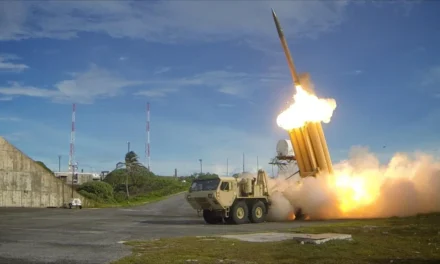Building spacecraft requires materials that can withstand the extreme conditions of space, including intense heat, cold, radiation, and mechanical stress during launch and operation. Materials are chosen based on their properties, including strength, weight, thermal resistance, and radiation shielding capabilities. Here’s an overview of the materials commonly used in spacecraft construction and the reasons for their selection:
1. Aluminum and Aluminum Alloys
- Properties:
- Lightweight
- High strength-to-weight ratio
- Corrosion resistance
- Easy to fabricate and weld
- Applications:
- Structural components like the spacecraft frame, panels, and fuel tanks.
- Examples:
- Aluminum 6061 and 7075 are frequently used in aerospace applications.
- Why Chosen:
- Aluminum alloys provide the necessary structural integrity while minimizing mass, a critical factor for spacecraft.
2. Titanium and Titanium Alloys
- Properties:
- High strength-to-weight ratio
- Excellent resistance to corrosion and high temperatures
- Biocompatibility for specific mission needs
- Applications:
- Load-bearing structures, landing gears, engine components, and fasteners.
- Why Chosen:
- Titanium offers superior performance in environments with high mechanical stress and extreme temperatures.
3. Carbon Fiber Reinforced Polymers (CFRPs)
- Properties:
- Lightweight
- Extremely strong and rigid
- High resistance to thermal expansion
- Applications:
- Satellite structures, solar panel frames, and payload supports.
- Why Chosen:
- CFRPs reduce weight significantly while maintaining structural strength, making them ideal for spacecraft components.
4. Stainless Steel
- Properties:
- High tensile strength
- Corrosion resistance
- Withstands high temperatures
- Applications:
- Fuel tanks, pressure vessels, and thermal protection systems.
- Examples:
- SpaceX’s Starship uses stainless steel for its primary structure.
- Why Chosen:
- Stainless steel is durable and maintains performance across a wide temperature range, making it suitable for reusable spacecraft.
5. Heat-Resistant Ceramics
- Properties:
- High melting point
- Excellent thermal insulation
- Resistance to thermal shock
- Applications:
- Thermal protection systems, re-entry shields, and insulation tiles.
- Examples:
- Silica tiles on the Space Shuttle and ceramic composites in heat shields.
- Why Chosen:
- Ceramics protect spacecraft from extreme temperatures during atmospheric re-entry.
6. Polyimides (Kapton)
- Properties:
- Excellent thermal stability
- High resistance to radiation
- Low outgassing in vacuum environments
- Applications:
- Insulation layers, wiring, and solar panel coatings.
- Why Chosen:
- Polyimides provide effective thermal insulation and remain stable in the harsh conditions of space.
7. Copper and Copper Alloys
- Properties:
- High electrical and thermal conductivity
- Corrosion resistance
- Applications:
- Electrical wiring, heat exchangers, and propulsion system components.
- Why Chosen:
- Copper ensures efficient heat and electrical conduction, critical for spacecraft systems.
8. Nickel Alloys (e.g., Inconel)
- Properties:
- High strength
- Excellent corrosion and oxidation resistance
- Withstands high temperatures
- Applications:
- Engine components, turbine blades, and combustion chambers.
- Why Chosen:
- Nickel alloys are ideal for high-temperature environments like rocket engines.
9. Silicon and Silicon Carbide
- Properties:
- High hardness and strength
- Excellent thermal conductivity
- Resistance to radiation
- Applications:
- Solar cells, sensors, and mirrors.
- Why Chosen:
- Silicon is crucial for photovoltaic systems, while silicon carbide is used for high-precision optical and structural components.
10. Gold and Other Precious Metals
- Properties:
- High thermal and electrical conductivity
- Resistance to oxidation and radiation
- Applications:
- Radiation shielding, electrical connectors, and coatings.
- Examples:
- Gold-coated layers on satellites (e.g., James Webb Space Telescope’s mirrors).
- Why Chosen:
- Gold reflects infrared radiation effectively and protects sensitive instruments from radiation damage.
11. Teflon (PTFE) and Other Polymers
- Properties:
- Low friction
- High thermal resistance
- Non-reactive to most chemicals
- Applications:
- Coatings for cables, seals, and thermal insulation.
- Why Chosen:
- Teflon prevents wear and ensures durability in extreme temperature and vacuum conditions.
Material Selection Considerations
- Weight:
- Minimizing weight is crucial to reduce launch costs.
- Strength:
- Materials must withstand mechanical stresses during launch and operation.
- Thermal Resistance:
- Spacecraft face extreme temperature fluctuations.
- Radiation Resistance:
- Protection against cosmic rays and solar radiation is vital.
- Durability:
- Long operational lifespans require materials that resist wear and degradation.
- Cost and Availability:
- Some high-performance materials are expensive and limited in supply.













